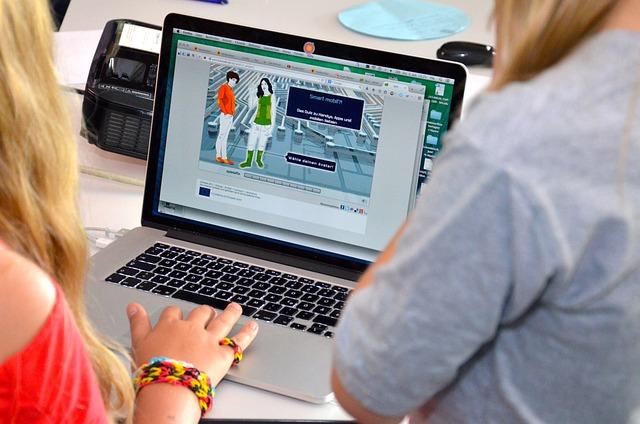In a world where information flows faster than a river in monsoon season, the media landscape in Pakistan stands as both a vibrant tapestry and a complex puzzle. As the nation grapples with its historical narratives and contemporary realities, the quest for truth becomes a navigational challenge amid a cacophony of voices. From traditional print journalism to the burgeoning realm of digital news platforms, Pakistan’s media has witnessed a seismic shift over the past decade—one that reflects the country’s social dynamics, political tensions, and cultural shifts. In this exploration of “Navigating Truth in Pakistan’s Evolving Media Landscape,” we delve into the intricacies of a media ecosystem where facts, opinions, and misinformation often intertwine, shaping public perception and dialogue. Join us as we traverse this multifaceted terrain, seeking clarity in the midst of chaos, and shedding light on the crucial role media plays in fostering an informed society.
Exploring the Impact of Digital Transformation on Pakistani Journalism
The landscape of journalism in Pakistan has undergone a significant transformation in recent years, primarily driven by rapid advancements in technology. Traditional media platforms, once the mainstay of news dissemination, have had to adapt to the digital age, leading to a surge in online news portals, social media influencers, and mobile journalism. As a result, the role of journalists has evolved from mere reporters to curators of information, navigating through a maze of data to provide accurate and timely news. This shift has birthed a new set of challenges and opportunities:
- Increased Accessibility: Digital platforms allow more voices to emerge within the media space, including citizen journalists.
- Speed vs. Accuracy: The race to break news often compromises thorough fact-checking, raising concerns over misinformation.
- Audience Engagement: Journalists can now interact directly with their audience, fostering a two-way communication channel that traditional media lacked.
Moreover, the emergence of analytics and data-driven storytelling has equipped journalists with tools to understand their audience better, tailoring content to their interests and preferences. However, this also raises ethical questions regarding privacy and data usage. The evolving digital media environment necessitates a more profound understanding of media literacy for the public, enabling them to differentiate between credible journalism and sensational fake news. Below is a brief overview of how digital platforms have changed news consumption habits:
| Aspect | Traditional Media | Digital Media |
|---|---|---|
| Information Source | TV, Radio, Newspapers | Websites, Social Media |
| Speed of News Delivery | Slower, Scheduled | Instant, 24/7 |
| Reader Interaction | Limited | Active Engagement |

Assessing the Role of Social Media in Shaping Public Perception and Misinformation
The rise of social media platforms has fundamentally transformed the landscape of information dissemination in Pakistan, acting both as a powerful tool for civic engagement and as a double-edged sword facilitating the spread of misinformation. With instant access to news and opinions, communities are now more interconnected than ever, allowing for a rapid exchange of ideas that shape public sentiment. However, the very same speed and accessibility make these platforms ripe for the propagation of false narratives. Analyzing the dynamics of social media reveals how quickly misinformation can escalate, leading to significant repercussions for public trust in traditional media sources and institutions.
Moreover, the mechanisms that drive engagement on social platforms often prioritize sensational content, which can distort the public’s understanding of pressing issues. The phenomenon of echo chambers, where users interact primarily with like-minded individuals, further amplifies this challenge. To illustrate this impact, consider the following table that highlights common themes associated with misinformation on social media:
| Misinformation Theme | Common Source | Impact on Perception |
|---|---|---|
| Political Manipulation | Unverified news articles | Increased polarization |
| Health Misinformation | Influencer endorsements | Public health risks |
| False Narratives | Misleading memes | Distrust in institutions |
As the media landscape continues to evolve in Pakistan, understanding the implications of social media on public perception becomes essential. It is crucial for stakeholders, including policymakers, educators, and the general public, to engage in media literacy initiatives that empower individuals to critically assess the information they encounter. By fostering an environment that encourages informed decision-making, society can combat the detrimental effects of misinformation while promoting a healthier discourse grounded in truth.

Cultivating Media Literacy: Empowering Citizens to Differentiate Fact from Fiction
In today’s fast-paced digital environment, media literacy stands as a crucial competency for every citizen navigating the complexities of information dissemination. This is especially true in Pakistan, where the proliferation of both traditional and social media can create a double-edged sword, blurring the lines between credible news and misinformation. Empowering citizens to effectively evaluate the sources and content of the information they consume is essential. Key aspects of media literacy include:
- Critical Thinking: Encouraging individuals to analyze and question information rather than accept it at face value.
- Source Evaluation: Teaching how to identify reliable information sources and discern bias or sensationalism.
- Digital Skills: Providing tools and knowledge on verifying facts via credible databases and established news outlets.
As part of a comprehensive strategy to enhance media literacy, educational institutions and community organizations can play pivotal roles by incorporating workshops, seminars, and online courses focused on these essential skills. To further illustrate the impact and methods of fostering media literacy, the following table summarizes successful initiatives:
| Initiative | Description | Target Audience |
|---|---|---|
| Fact-Checking Workshops | Hands-on sessions teaching how to verify news sources and data. | Students and Young Adults |
| Media Literacy Campaigns | Public information drives utilizing social media to educate citizens. | General Public |
| Collaborative Programs | Partnerships between NGOs and schools to create resource-rich environments. | Educators and Parents |

Developing Ethical Guidelines for Responsible Reporting in a Fragmented Information Era
As the media landscape in Pakistan becomes increasingly fragmented, establishing robust ethical guidelines for reporting is more crucial than ever. Journalists and media organizations must navigate a complex web of information sources, where traditional news outlets coexist with social media and citizen journalism. This dynamic environment demands adherence to principles that uphold integrity and accuracy, safeguarding the public’s right to know while respecting the diverse viewpoints that contribute to national discourse. Key considerations in developing these guidelines should include:
- Fact-Checking Protocols: Implement rigorous verification processes for all reported information to combat the spread of misinformation.
- Source Transparency: Encourage journalists to disclose their sources, especially when reporting on sensitive issues, to build trust with the audience.
- Inclusivity: Strive for diverse representation in news coverage to reflect the multifaceted nature of society.
- Accountability Mechanisms: Develop systems for addressing errors and missteps in reporting, reinforcing a culture of responsibility.
The evolution of technology and media consumption patterns necessitates a continuous re-evaluation of ethical standards. Organizations should consider establishing a dedicated body to review and update these guidelines regularly, ensuring they remain relevant in the face of rapid changes. A collaborative approach involving journalists, civil society, and media experts can promote more holistic standards. A suggested framework could include:
| Principle | Description |
|---|---|
| Integrity | Commitment to truth and accuracy in all reporting. |
| Respect | Value differing opinions and treat all subjects with dignity. |
| Fairness | Strive for balanced reporting, presenting all sides of a story. |
| Transparency | Openly disclose conflicts of interest and biases. |
In Summary
As we draw the curtain on our exploration of Pakistan’s evolving media landscape, it becomes evident that the quest for truth remains a complex tapestry woven with threads of ambition, innovation, and challenge. In an era defined by rapid technological advancements and shifting societal paradigms, the narratives we consume shape not only our understanding of the world but also our collective identity.
Navigating these waters requires discernment and a willingness to engage critically with diverse sources of information. As media continues to adapt, influenced by both internal dynamics and external pressures, the responsibility of every individual—be it a journalist, consumer, or activist—grows heavier. We must all become vigilant stewards of truth, embracing varied perspectives while striving for clarity in a cacophony of voices.
The landscape may be fraught with obstacles, but it is also rich with potential for transformative dialogue. Moving forward, let us champion the essence of ethical journalism and foster a culture that values inquiry over sensationalism. In doing so, we can cultivate a media environment that not only reflects the realities of our society but also empowers us to shape a more informed, cohesive future. The journey is ongoing, and every step we take toward transparency and integrity is a step toward a more enlightened public discourse.



